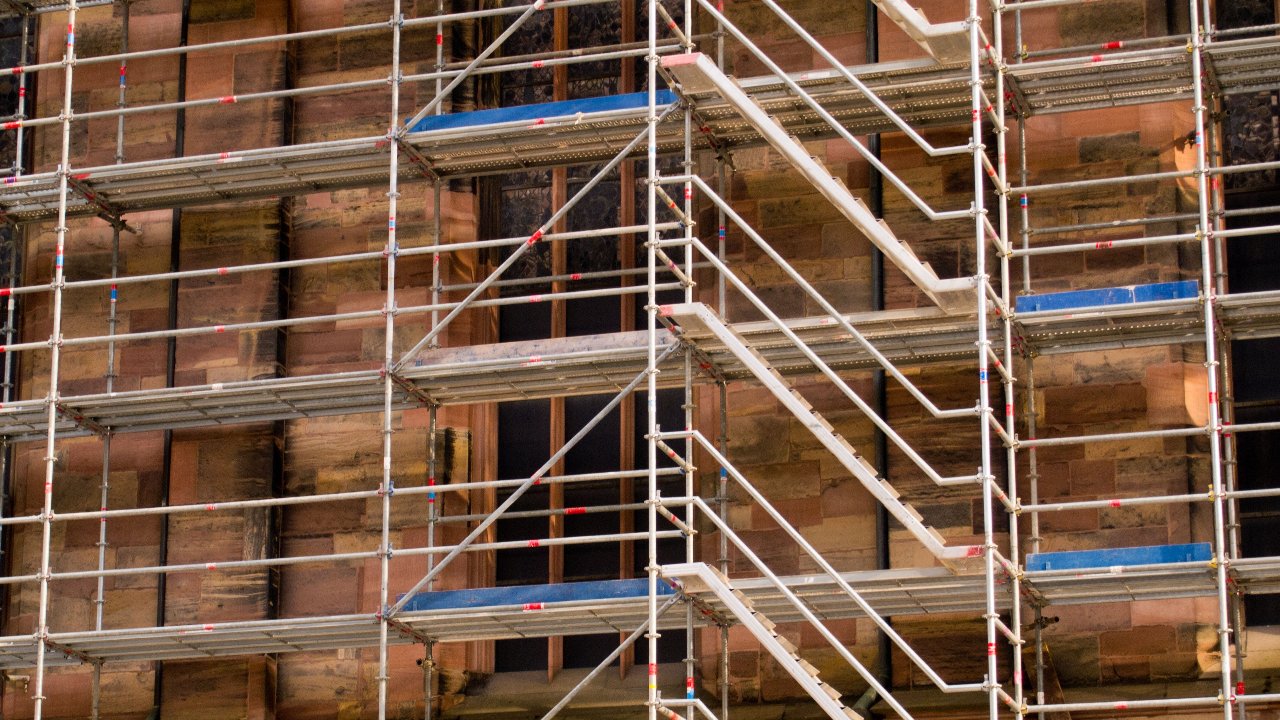Table of Contents Show
Construction scaffolding is a crucial part when building any structure. Its main purpose is to provide a platform for workers to do their job effectively and efficiently. Our construction methods have evolved over time. And, along with it, our use of scaffolding techniques or methods.
In this article, you will learn four of the most commonly used construction scaffolding. This article is especially helpful if you want to know more about construction scaffolding London.

Brick Layer’s Scaffolding / Single Scaffolding
This is perhaps the simplest form of construction scaffolding. As the name suggests, this kind of scaffolding uses single vertical support, or also known as standards. The standards are vertically placed parallel to the wall and can be made of timber or bamboo.
The advantage of a single scaffolding is that it’s easy to construct and disassemble. This also means that it’s perhaps the cheapest form of scaffolding to use.
Mason’s Scaffolding / Double Scaffolding
The double scaffolding is an evolution of the single scaffolding. What separates the double scaffolding is that it makes use of two vertical supports, while the single scaffolding only uses one.
Since double scaffolding makes use of two vertical supports, you can expect it to be more stable. It also provides more working space for the workers if needed. Furthermore, since it offers more support, the double scaffolding can reach higher heights compared to the single scaffolding.
On the downside, double scaffolding will take more work in terms of assembly and disassembly. Hence, you can expect it to be more expensive than the single scaffolding.
Read Also:
- Home Renovations – Effective Steps from Getting Permissions to Appointing Scaffolding Service
- Intelligent Scaffolding “What Equipment You Can Use for Renovations to Tall Rooms”
- How to Choose the Best Residential Scaffolding for Your Next Job
- 4 Main Reasons for Scaffolding Accidents and How to Avoid Them
- Your Renovation Guide to Home Scaffolding
Tubular or Steel Scaffolding
What makes tubular scaffolding different is the use of the primary material. This type of scaffolding makes use of steel tubes instead of timber or bamboo. These steel tubes are connected together by tube clamps or couplers and can be erected in virtually any configuration. It can also be in the form of a single or double scaffolding.
Because you are using hollow steel tubes, this kind of scaffolding offers unique benefits. For one, it can be assembled and disassembled faster compared to bamboo or timber scaffolding. Steel is also more durable than wood.
Hence, it’s more economical in the long run since you don’t have to replace them. It also offers a much better fire-resisting property compared to wood. Since hollow steel tubes are very strong, they can be assembled higher and safer than double scaffolding.
The downside of the tubular scaffolding is the higher upfront costs.
Cantilever Scaffolding / Needle Scaffolding
The cantilever scaffolding is different as it serves a unique purpose. There are cases in which the construction demands scaffolding, but it’s difficult to plant it to the ground. For such cases, a cantilever scaffolding is then used.
The cantilever is also very challenging as the design requires support to be planted on the lower walls or floors. Also, there’s typically a balancing mechanism to offset the weight of the hanging scaffolding.
Wrapping It All Up
Unless you are only building a single-floor and very basic structure, you will often need to use a type of scaffolding. The most common ones these days are:
- Brick Layer’s Scaffolding / Single Scaffolding
- Mason’s Scaffolding / Double Scaffolding
- Tubular or Steel Scaffolding
- Cantilever Scaffolding / Needle ScaffoldingIf you are not sure which kind of scaffolding to use, it’s highly advisable to consult an experienced professional.









